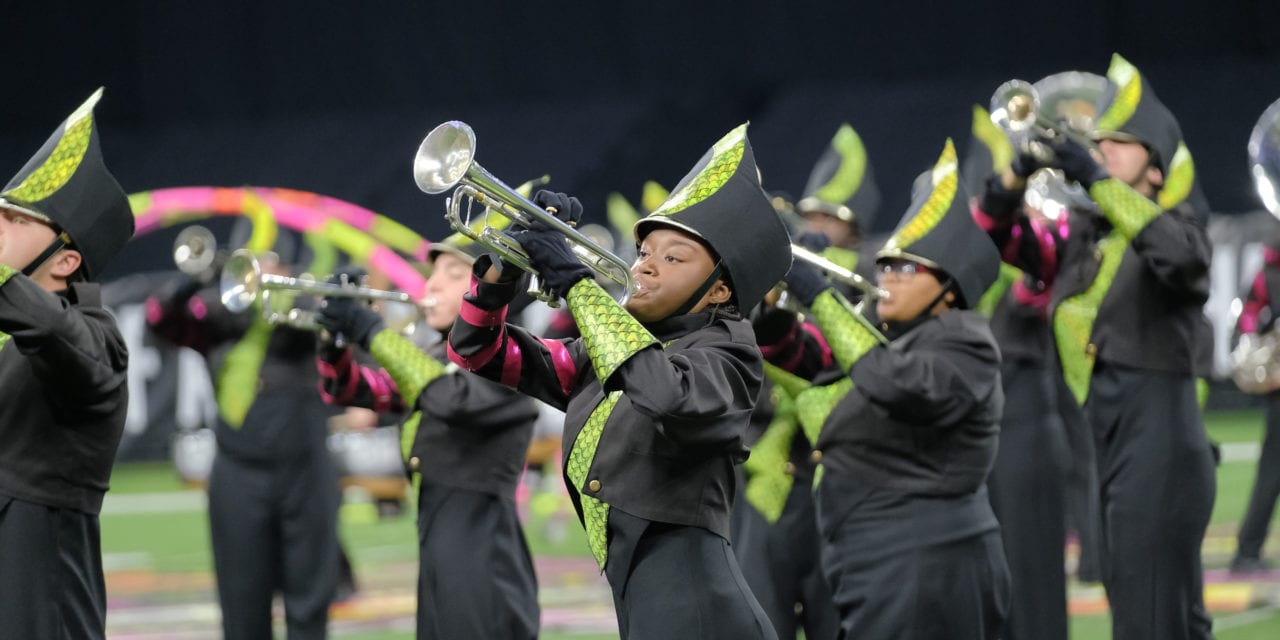By Gary Markham
The beginning of the fall season stirs thoughts about marching band and competitive events. Music competition in general has always concerned and fascinated me on many levels as a band director, music supervisor and Chief Judge.
In my role as Chief Judge for Bands of America, I have the unique opportunity to observe behavior and discuss issues about competition with students, directors and parents across the country.
I often worry about keeping the competitive aspect of our programs in check and in proper perspective. I believe this is important for the educational health of our students and programs and the professional growth of our teachers.
While much has been written on this topic, most opinions have sited “competition” itself as the problem or the solution. The reality is that competition in education is only a tool for motivation and evaluation – one tool among a broad repertoire of strategies that inspire and assess musical performance and program success. Does the competition itself motivate every individual in the band? Is the placement or score in competition the sole way to evaluate band program achievement? Research has indicated that this is not the case and common sense should tell us that there should be many other indicators. Bands of America has always maintained a philosophy that the point of competitive events is the offering of an opportunity to do one’s very best in an educational atmosphere that also generates the appreciation of other’s hard work. So with this in mind, it is not “competition” itself that needs scrutiny, but the way we use that strategy in our programs and how we react to competitive results.
We should look at some of the realities in marching band competitions to properly place perspective on the meaning of the activity. First, rating and ranking in band competitions is at best a subjective venture. While judge training and experience has improved significantly over the past several years, the numerical scores are still subject to tolerances and perceptions that vary. In any one specific contest the evaluation is only a single snapshot of the band program’s achievement. No one placement or score should be interpreted as the total truth. Additionally, scores and placements also vary with the number of bands and quality of the band performances in the contest. These contest dynamics influence scoring. If the goal set for the band is a higher number each time demonstrating improvement, we may experience disappointment and frustration trying to realize success with this goal. The number received in a subsequent contest could have been forced lower than a previous one because of the ranking and rating priority in a contest with many more or higher quality bands. It’s therefore difficult to make direct comparisons from one contest to the next, especially if the judges and participants change. Perhaps in a perfect world we could realize the goal, but it is unlikely. The result many times is a criticism of judge inconsistency when in fact the judge may be very consistent in their ranking and rating process from contest to contest. The advice would be to reconsider the goal, or educate students, staff and parents to the realities of the judging process and contest dynamics.
Judges have two main responsibilities of equal importance in a band contest. First, the tape commentary about the performance should provide accountability for evaluation, constructive criticism and useful information that encourages improvement in a particular caption. Second, judges must rank and rate each band in the contest. This means they must first decide the hierarchy in their caption based on the performances and then to determine the degree of difference numerically between groups. Judges have many tools to aid in this process including score sheets, a criteria reference rubric, and a judging guide paper that focuses on the caption philosophy and comparison questions. For the director and staff these tools are ways to focus instruction and insure coverage of all performance components. The front of each judging sheet is the “What” part of the curriculum; the criteria reference rubric on the back is “How” well it is being accomplished. The guide would be a valuable tool for band directors and staff to understand the judging process. These guides are available on the BOA web site with the judging manual.
Another area of eternal debate is the use of the achievement equation: What + How = Achievement. Examples of these considerations in the performing music caption are: • Pure musical challenges – these are substantive demands placed on performers by the music composition itself • Environmental challenges – circumstances that performers must face to hear others in order to accomplish ensemble responsibilities • Physical challenges – body movement and effort required while performing the music.
The debate generally centers on whether a particular group is receiving enough numerical credit for “What” they are attempting to do in a caption. Designers, staff and directors generally want more credit because the content in the show has difficulty or extraordinary challenges for the performers. The truth is that judges do consider the substance and challenge in their caption, but are more reluctant to give high credit just for the attempt. It’s not enough just to choose to play the Hindemith Symphony; the performance should also be a respectable rendition. While high expectations in choices are admirable, those same high expectations must also be for performance quality. Advice would be to create a wonderful, entertaining, and substantive program; be sure that you and the staff know how to teach it; and that the students have the ability and time to achieve it. Any breakdown in that process will certainly result in less than success.
The real key to healthy educational competitive activities includes:
- Director and staff understanding of the entire judging process
- Setting realistic goals that involve striving for excellence and giving the very best effort
- Understanding of contest dynamics and other influences on number management
- Complete communication to students and parents about all aspects of judging and
competitive activities - How the achievement equation is applied competitively
- An appreciation that other groups also work diligently
- A realization that competitive results are not the only measure of program achievement
- Educate administrators, parents, and students about the types of evaluation that indicate program improvement and educational value.
Recent Bands of America Championships have been imaginative displays of marching band ingenuity, innovation, exploration and creativity, serving as an inspiration to us all.
Each band contributes a unique perspective to the activity. Exploration with electronic ideas, creative textures in music writing, innovation in percussion writing, as well as, new visual territory. Overall, bands have improved dramatically and that has been a result of the intelligent application of instructional and design strategies with realistic goals. Students learn so much more during the journey than with the competitive result. Obviously, evaluation decisions in each caption are extremely difficult, but judges are great supporters of extraordinary performances. The end result is a wonderful educational experience for everyone involved in the activity. The real winner is the band activity itself and the positive influence it has for students.




